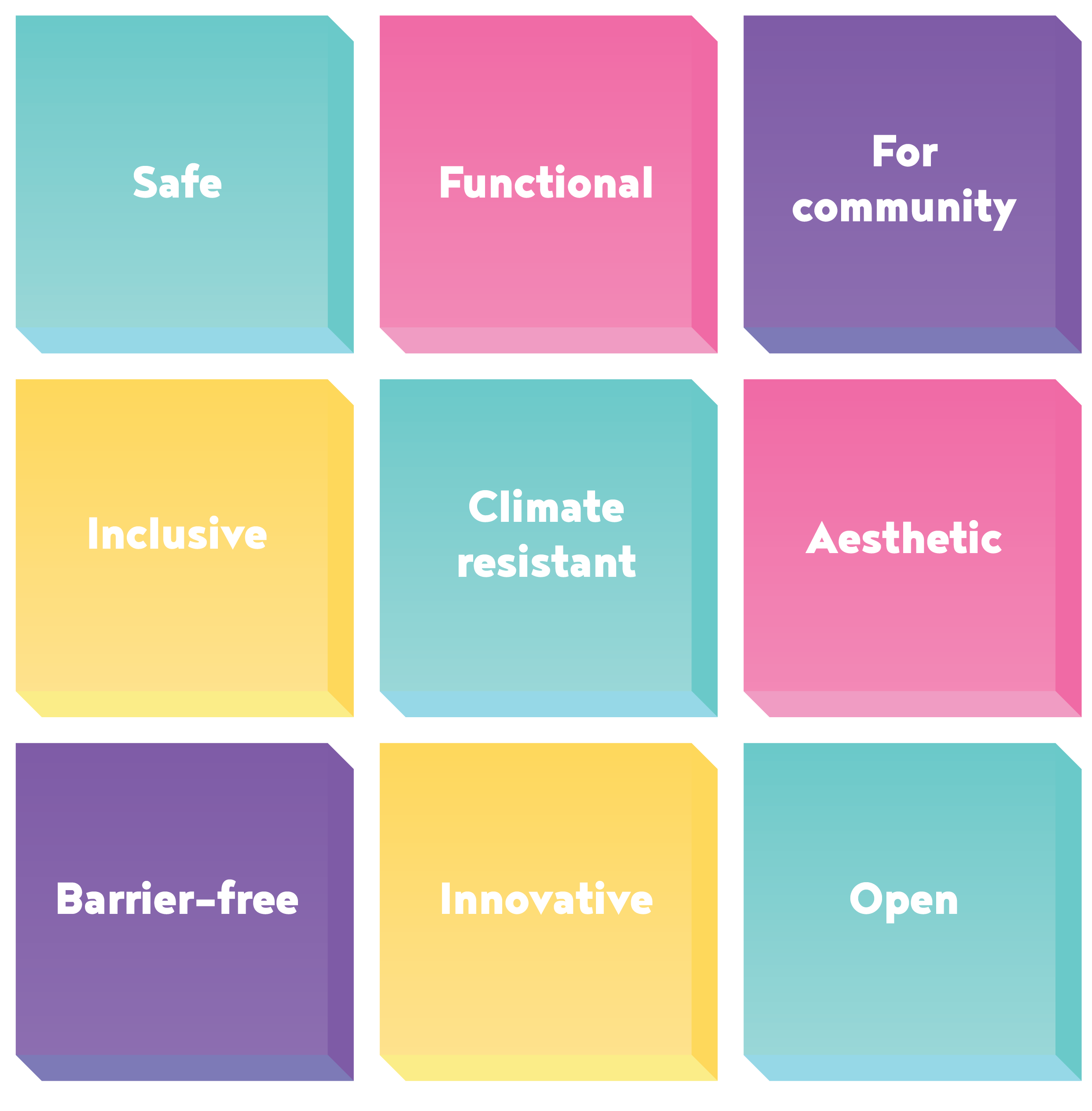Public space and good life in the city
[CXI]
Public spaces are like the pulsating arteries of an urban organism. They supply communities with living energy. The Covid-19 pandemic has shown the irreplaceable role of the access to green, inclusive, and secure public spaces for the quality of the population’s life (well-being).
What is public space?
Public space is any place used for general use by all citizens. These are all undeveloped areas in the city located between the buildings.
Public spaces have many forms. These are mostly places with a clear border, such as streets, squares, pedestrian zones, promenades, waterfronts, playgrounds, dog walking areas, monuments, parks, forest parks, and other public greenery. These are also spaces in housing estates between apartment buildings, courtyards, front gardens, or shopping center surroundings.



Most public spaces are owned and maintained by a municipality, city, region, state, or other public institution. The author of a quality public space can also be a private owner who decides to improve immediate surroundings as a part of his investment plan.
The democratic value of the public space is that it is an open and publicly accessible space for everyone. We can usually use them without any restrictions and for free.
What is the public space used for, and what should it look like?
Public spaces serve the citizens of the city as a background for their activities. We mean sport, leisure time, walking transit, or simple meeting activities. The public space is the main stage of the performance called “city life.”


Public space specific for transit


Public space specific for relax
Public spaces have to meet many conditions to serve everyone and be safe. The demands and needs of society are constantly changing, and those rapid changes pose a challenge to the city’s development. Modern public spaces should respond flexibly to them.
Quality space should be:

Public spaces should respond to basic human needs. According to Maslow’s hierarchy of needs, these are:
- Physiological Needs
Quality public spaces provide citizens a place to relax. There are fountains to supplement the drinking regime in places with a higher concentration of people.
- Safety and security needs
Safe public spaces prevent crime, are well lit, and have maintained sidewalks.
- The need to be a part of a community
Public space is key for meeting and social leisure activities.
- The need for respect and self-realization
Citizens need to feel dignified in a public space. This is related to the barrier-free spaces, thanks to which everyone can pass through public spaces self-sufficiently.
- Mental and spiritual needs
Public space can also meet these needs with its aesthetics. The art present in the streets of the city is nothing unusual. A stress-laden organism can be regenerated by visiting the available greenery or relaxing by the water.
Quality public spaces think of everyone
Great designed and maintained public spaces increase the city’s satisfaction and quality of life (well-being). They also support the development and the attractivity of the city. If they meet the needs of the weakest and most vulnerable groups of the population, it is guaranteed that the spaces will be attractive, accessible, and functional for the broadest spectrum of the population. Today, due to the availability of public spaces, great emphasis is placed on barrier-free accessibility.
Only barrier-free areas are accessible to everyone. For seniors, parents with children, or people with limited mobility.
By whom and how are public spaces created
Although municipality, city districts, and large private investors are the main actors in urban development, we are all involved in creating public space daily. We do so with our activities and level of care.
Citizen Experience and Well-being Institute (CXI) is also part of a network of organizations that impact the creation of public space. Various methods and tools are used for this.
- Research of data and maps
- Terrain research using MUL (Mobile Urban Lab)
- Participative methods
- Innovation programs like Challenger Urban:Creative, hackathons, or grant program Inovuj ty!
- educational workshops and discussions
- interventions in public space
- Bravo Hub
Read the short article about how CXI works with public space.
Today, public space is more important than ever. It is no longer just a physical space. The complexity of the context makes it a service that the city offers to its inhabitants.
The author of the article is a researcher of the CXI team specializing in public space.

